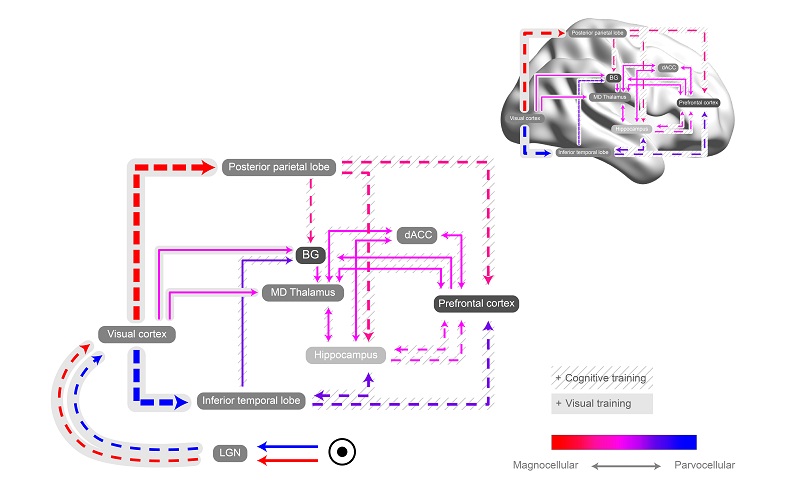Wayne State University medical student Elizabeth Kody has published a comprehensive review of schizophrenia research in academic literature that connects the learning and memory deficits characteristic of the disorder with visual impairments, a relatively under-appreciated area of research.

“The paper advocates for a shift in perspective necessary to develop future treatments of this ‘whole brain’ disorder,” said Kody, a third-year medical student and Class of 2024 M.D. candidate.
“Magnocellular and parvocellular contributions to brain network dysfunction during learning and memory: Implications for schizophrenia” is published in the Journal of Psychiatric Research.
Kody worked with School of Medicine Professor of Psychiatry and Behavioral Neurosciences Vaibhav Diwadkar, Ph.D., on the project. Dr. Diwadkar is co-director of the department's Brain Imaging Research Division.
“Our hope is that her paper will provide a renewed impetus for focus on contributions of the visual system to schizophrenia,” Dr. Diwadkar said. “The illness is characterized by profound cognitive deficits. However, as she points out, these deficits sit ‘on top of’ contributions from the visual pathways. If visual inputs are impaired, cognitive function will be impaired. Accordingly, behavioral interventions in schizophrenia may be more successful not only if they target cognitive enhancement, but also target visual enhancement. A combination of these two classes of training can be more successful precisely because such a combination will target cognitive brain networks and visual brain networks.”
Utilizing a series of graphics included in the paper, Kody reasons that when trying to understand learning and memory deficits in schizophrenia, it is limiting to focus only on brain networks centered around the prefrontal cortex and the hippocampus. Rather, a contributing factor to poor learning and memory function in schizophrenia is that brain networks sub-serving visual processing are impaired. Therefore, the effects of impaired function of visual pathways are amplified as information ascends through the brain.

In renewing emphasis on schizophrenia as a whole brain rather than a local brain region syndrome, she also makes notable prescriptions on how her theoretical framework can inform and enhance intervention strategies in patients, Dr. Diwadkar added.
“It's great to see our hard work shared with the medical community. I enjoyed working with Dr. Diwadkar because he motivated this review to do more than summarize the current research in the field. Instead, he encouraged me to synthesize, critically reflect on academic literature, and advocate for my perspective,” Kody said. “I encourage any medical student to write a review in their area of interest. Beyond getting the chance to dive into the literature of your chosen field, you develop a deeper understanding of the current direction of research and have the opportunity to add your voice.”
Kody started the review in the early months of the COVID-19 pandemic, because meeting in person to conduct a research study was nearly impossible.
“Writing comprehensive reviews is very challenging,” Dr. Diwadkar said. “One needs to survey a large swathe of literature, often in multiple areas of work. What Elizabeth has done is even more challenging. She has written a theoretical position paper that can potentially advance fields of research into new directions. To write such a paper, you not only have to review the literature, but also ingest the contents of these scores of papers and come up with a novel set of ideas. Her figures, their aesthetics and the logical progression with which they are arranged are illustrative of this.”
Preparation of the work was supported by the National Institutes of Mental Health (MH111177), the Ethel and James Flinn Foundation, the DMC Foundation, the Cohen Neuroscience Endowment, the Jack Dorsey Endowment and Lycaki-Young Funds from the state of Michigan.
For more information on the School of Medicine’s Brain Imaging Research Division, visit brain.med.wayne.edu/
Students interested in conducting research at the School of Medicine should visit medstudentresearch.med.wayne.edu/